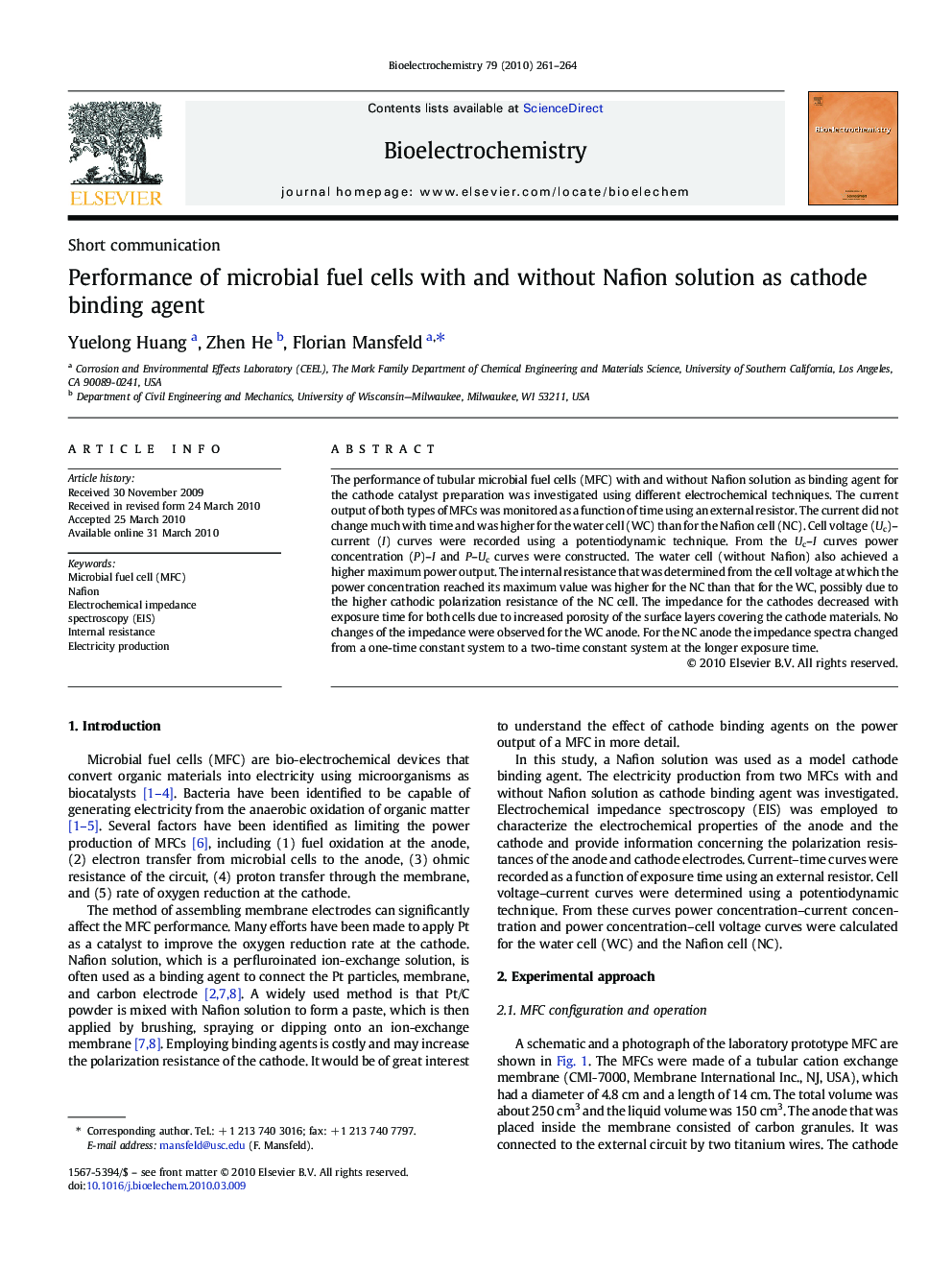| Article ID | Journal | Published Year | Pages | File Type |
|---|---|---|---|---|
| 1275096 | Bioelectrochemistry | 2010 | 4 Pages |
The performance of tubular microbial fuel cells (MFC) with and without Nafion solution as binding agent for the cathode catalyst preparation was investigated using different electrochemical techniques. The current output of both types of MFCs was monitored as a function of time using an external resistor. The current did not change much with time and was higher for the water cell (WC) than for the Nafion cell (NC). Cell voltage (Uc)–current (I) curves were recorded using a potentiodynamic technique. From the Uc–I curves power concentration (P)–I and P–Uc curves were constructed. The water cell (without Nafion) also achieved a higher maximum power output. The internal resistance that was determined from the cell voltage at which the power concentration reached its maximum value was higher for the NC than that for the WC, possibly due to the higher cathodic polarization resistance of the NC cell. The impedance for the cathodes decreased with exposure time for both cells due to increased porosity of the surface layers covering the cathode materials. No changes of the impedance were observed for the WC anode. For the NC anode the impedance spectra changed from a one-time constant system to a two-time constant system at the longer exposure time.
